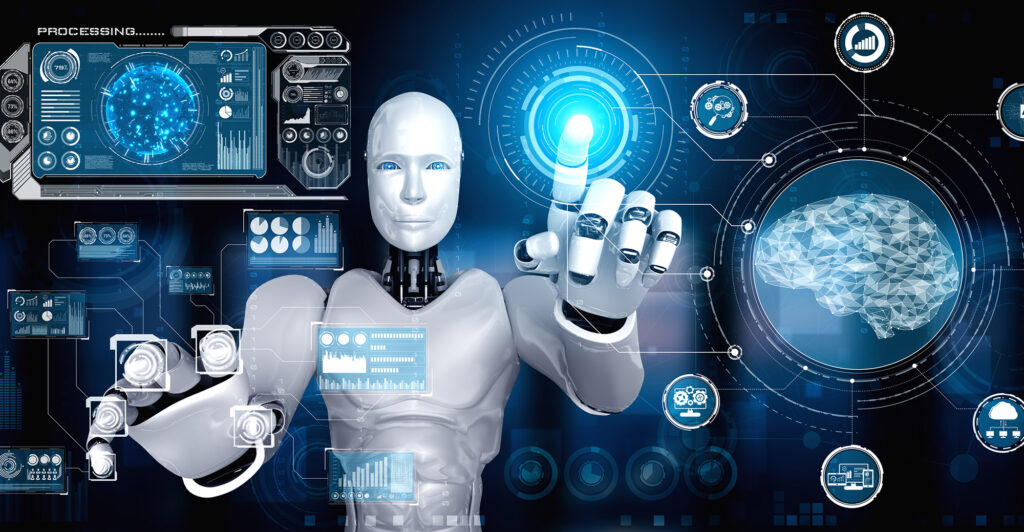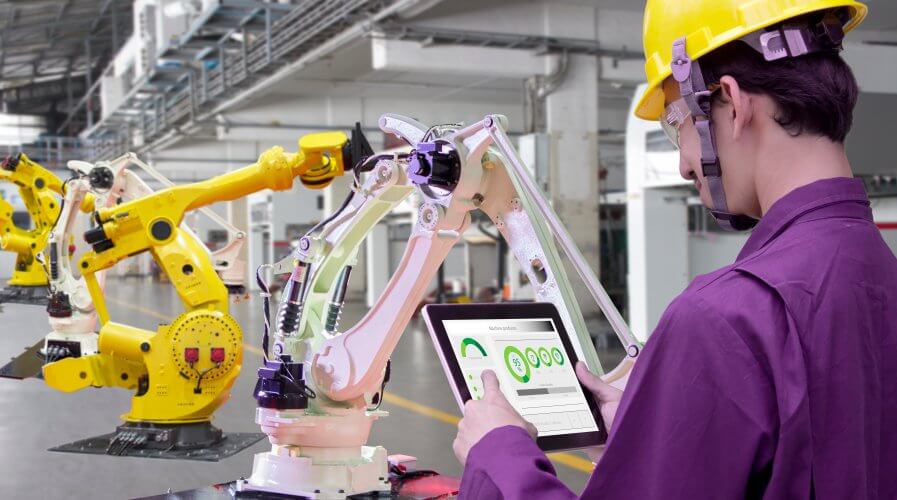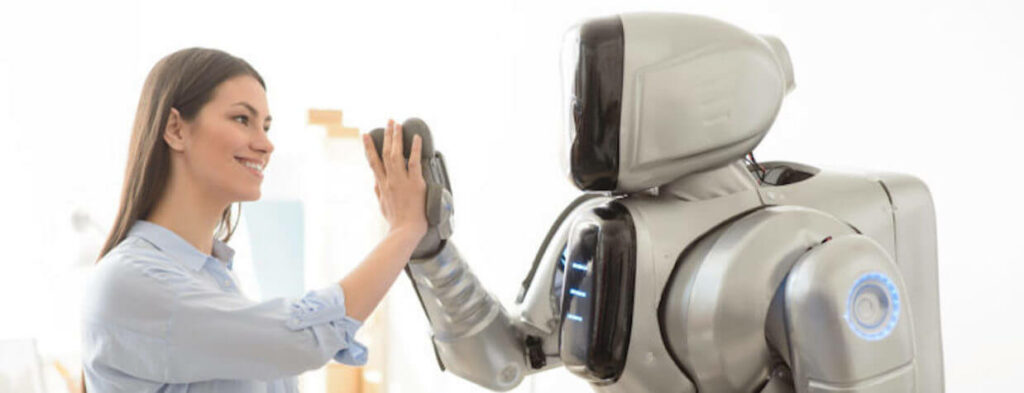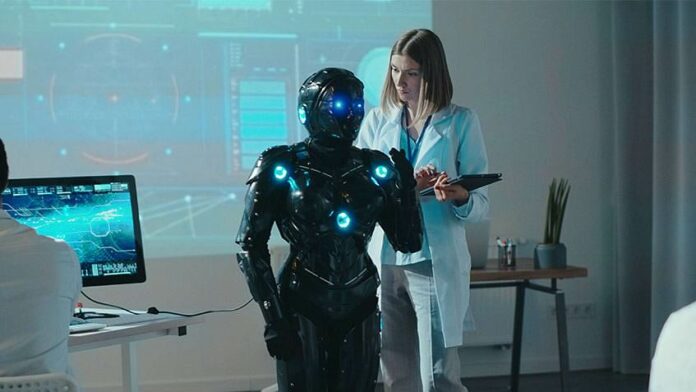In a rapidly evolving technological landscape, robotics stands at the forefront of innovation, ushering us into an era of unbounded possibilities. This acceleration is not just an industrial transformation; it’s a societal shift, altering how we live, work, and interact. The fusion of robotics with other disruptive technologies such as (AI) Artificial Intelligence, (IoT) Internet of Things, and advanced materials is fueling this growth.
The future of robotics promises unprecedented advancements, from autonomous vehicles navigating our streets, to precision surgical robots revolutionizing healthcare, to intelligent robotic companions augmenting our daily lives. As we delve into the future of robotics, it is crucial to understand its trajectory and potential implications.
Historical Progression of Robotics
Robotics, a field that was once limited to science fiction, has now made substantial strides in real-world applications, driven by decades of dedicated research and innovation. Its roots trace back to the invention of rudimentary automated machines in ancient civilizations. In the 20th century, the term ‘robot’ was coined, marking the birth of modern robotics. From the Unimate, the first industrial robot in the 1960s, to the Mars rovers, robotics has evolved exponentially.
Its growth was fostered by technological advancements, such as the advent of microprocessors, artificial intelligence, and improved sensor technologies. This historical progression underscores the monumental journey of robotics, setting the stage for an exciting future.

Convergence of Robotics and (AI) Artificial Intelligence
1. Advanced Decision Making: AI enables robots to make complex decisions based on data analysis, improving their problem-solving capabilities and reducing the need for human intervention.
2. Learning and Adaptability: Through machine learning, robots can learn from their experiences and adapt their behavior to new situations, enhancing their efficiency and effectiveness.
3. Improved Perception: AI-powered computer vision and sensor fusion allow robots to perceive their environment in detail, enabling them to navigate complex landscapes and interact with objects more accurately.
4. Natural Language Processing: With AI, robots can understand and respond to human language, facilitating better human-robot interactions and expanding the applications of robots in customer service, elderly care, and education.
5. Predictive Maintenance: AI algorithms can predict potential faults and schedule maintenance, increasing the lifespan and reliability of robotic systems.
6. Autonomous Robots: The combination of AI and robotics creates fully autonomous robots capable of performing tasks without supervision, such as self-driving cars and autonomous drones.
7. Cognitive Robotics: This emerging field focuses on creating robots with ‘cognitive’ abilities, such as understanding their surroundings, learning from past experiences, and even showing elements of creativity.
8. Ethical and Safety Considerations: As AI becomes more integrated with robotics, concerns around ethical use, safety, and regulation become increasingly important, requiring careful consideration and appropriate legislation.
Related : The Future of Artificial Intelligence.
Breakthroughs Shaping the Future of Robotics
1. Soft Robotics: The development of flexible, adaptable, and durable materials is enabling a new generation of ‘soft robots.’ Mimicking biological systems, these robots can navigate complex environments, handle delicate items, and interact safely with humans.
2. Bio-inspired Robotics: Researchers are creating robots modeled on animals and plants, leading to innovative designs and functionalities. Examples include robotic fish for underwater exploration, bird-inspired drones for aerial surveys, and plant-inspired robots for medical procedures.
3. Robotic Process Automation (RPA): RPA uses software robots or ‘bots’ to automate routine tasks, improving efficiency and accuracy in various sectors, such as finance, healthcare, and customer service.
4. Humanoid Robots: Advances in technology are leading to more humanoid robots that closely resemble and behave like humans. These robots can potentially perform tasks in environments designed for humans, from household chores to complex industrial tasks.
5. Swarm Robotics: Inspired by nature, swarm robotics involves creating groups of robots that can work together to perform tasks more efficiently. Applications range from search and rescue missions to agriculture and construction.
6. Robotics-as-a-Service (RaaS): This emerging business model allows companies to rent robotic services based on their needs, lowering the barrier to entry and promoting wider adoption of robotics.
7. Cloud Robotics: By connecting robots to the cloud, they can access vast amounts of data, powerful computation resources, and advanced AI algorithms. This connectivity enhances their capabilities and allows for remote operation and collaboration between robots.
8. Robotic Exoskeletons: These wearable devices enhance human strength, endurance, and mobility, with applications in healthcare, military, and industry. Future advancements could include more lightweight and energy-efficient designs.
9. Quantum Robotics: Although in its infancy, quantum robotics explores how quantum computing could revolutionize robot processing power, leading to unprecedented capabilities.
10. Ethical and Legal Breakthroughs: As robotics advances, new ethical and legal standards are being developed to guide their use. These include regulations around safety, privacy, accountability, and potential job displacement.
11. Energy Efficiency: Future robots will be designed to consume less power and work for extended periods, thanks to advancements in battery technology and energy-efficient design.
12. Integration of IoT with Robotics: The Internet of Things (IoT) will enhance robotic capabilities, allowing for better data collection, real-time analysis, and more autonomous functionality.
13. Advanced Sensory Perception: The future of robotics will feature improved sensory inputs that mimic human senses. This will lead to better object recognition, obstacle avoidance, and overall situational awareness, thereby increasing the adaptability and safety of robots.
14. Autonomous Vehicles: Self-driving cars, autonomous drones, and unmanned marine vehicles represent significant breakthroughs in robotics, offering safer and more efficient transport.
15. Robots in Space: Robotic technology will continue to play a crucial role in space exploration, from rovers on Mars to potential probes venturing into the outer reaches of our solar system.
The Role of Robotics in Various Sectors

1. Healthcare and Medicine:
a. Surgery: Robotics are being used for precision surgery, where they can carry out complex procedures with increased accuracy, minimizing risks and recovery time.
b. Rehabilitation: Robotic devices like exoskeletons and prosthetics are assisting in the rehabilitation of patients, helping restore mobility and strength.
c. Assistive Robots: Robots are providing assistance to the elderly and disabled, helping them with everyday tasks and improving their quality of life.
d. Drug Delivery: Robots are being used for precise drug delivery, especially in treatments where drugs need to be delivered to specific locations in the body.
e. Telemedicine: Robotic systems enable doctors to examine and treat patients remotely, expanding the reach of healthcare services.
2. Agriculture:
a. Automated Harvesting: Robots equipped with advanced sensors and AI are being used for harvesting crops, increasing efficiency and reducing waste.
b. Precision Agriculture: Robots can monitor and manage crops at an individual level, applying water, fertilizers, and pesticides precisely where needed.
c. Livestock Management: Robots are used for tasks like milking cows, feeding animals, and monitoring their health.
d. Vertical Farming: In these indoor farms, robots can plant, care for, and harvest crops, maximizing space efficiency.
3. Manufacturing and Logistics:
a. Assembly: Industrial robots can perform repetitive assembly tasks with speed and precision, improving productivity and quality.
b. Material Handling: Robots are used for moving, sorting, and organizing goods in warehouses, making logistics more efficient.
c. Inspection: Robots can carry out consistent, detailed inspections of products, ensuring high standards of quality and safety.
d. Packaging: Robots can pack goods quickly and precisely, reducing the risk of damage and increasing speed.
4. Consumer Services:
a. Home Robots: Robots like vacuum cleaners and lawn mowers are performing household chores, while personal assistant robots are becoming more sophisticated.
b. Retail: Robots are being used in stores for tasks like stocking shelves, taking inventory, and guiding customers.
c. Food Service: Robots are being employed in restaurants for cooking, serving, and cleaning.
d. Education: Robots are being used as learning tools in classrooms, helping teach everything from coding to foreign languages.
5. Military and Defense:
a. Surveillance: Unmanned aerial vehicles (UAVs) and ground vehicles are used for surveillance, collecting intelligence without putting human lives at risk.
b. Bomb Disposal: Robots are used to safely disarm and dispose of explosives.
c. Reconnaissance: Robots can scout dangerous areas, providing valuable information before human troops are deployed.
d. Logistics: Robots can transport supplies in challenging environments, freeing up personnel for other tasks.
e. Combat: While controversial, the use of robots in combat scenarios is being explored, with systems that can defend against threats or support human soldiers.
The Future of Humanoid Robots
The future of humanoid robots is exciting and full of possibilities. With advancements in AI and machine learning, these robots are expected to become more intelligent and autonomous, capable of performing complex tasks and interacting naturally with humans. They will likely play an increasing role in various sectors, from healthcare, where they can provide companionship and care, to customer service, where they can interact with customers and solve issues. The goal is to design humanoid robots that not only replicate human behaviors but also understand and respond to human emotions. This marks a significant step towards more integrated and personalized robotic solutions.
The Impact of Robotics

1. Job Creation and Transformation: Contrary to the fear that robots will replace human jobs, they can create new employment opportunities. Robots need human involvement for programming, maintenance, and supervision. Also, as robots take over mundane tasks, humans can focus on complex and creative tasks, leading to job transformation.
2. Productivity Enhancement: With the ability to work round-the-clock without fatigue, robots can significantly enhance productivity in various sectors, including manufacturing, logistics, and healthcare.
3. Increased Safety: Robots can handle hazardous tasks, thereby reducing the risk of workplace injuries. They are being deployed in scenarios such as disaster response, deep-sea exploration, and handling of hazardous materials.
4. Quality Improvement: Robots, with their precision and consistency, can minimize errors, thereby improving the quality of products and services.
5. Social Impact: Robotics has the potential to address pressing societal issues. For example, assistive robots can aid the elderly and people with disabilities, improving their quality of life.
6. Environmental Impact: Robots, particularly in the field of agriculture and waste management, can contribute to sustainability and conservation efforts.
7. Economic Impact: The widespread adoption of robotics can lead to economic growth, driving innovation and competition, and contributing to GDP.
8. Ethical and Privacy Concerns: The use of robots, particularly those equipped with AI and facial recognition, raises ethical and privacy concerns that need to be addressed by comprehensive regulations.
Overcoming Challenges in Robotics:
1. Improving AI and Machine Learning: Advances in AI and machine learning are essential for creating robots that can understand, learn, predict, and adapt to complex situations.
2. Refining Human-Robot Interaction: The ability for robots to understand and respond appropriately to human emotions, gestures, and languages is critical for their wider acceptance and usefulness.
3. Enhancing Autonomy: Developing robots that can operate independently in a variety of environments, including those that are unpredictable or hostile, is a significant challenge.
4. Increasing Robustness and Reliability: Robots need to be designed to be robust and reliable, capable of performing tasks consistently over long periods without failure or extensive maintenance.
5. Addressing Ethical and Privacy Concerns: Issues related to job displacement, privacy, and ethical considerations need to be addressed as robots become more integrated into our society.
6. Creating Clear Legal Frameworks: As robots become more autonomous, legal issues related to responsibility and accountability in case of accidents or misuse need to be clearly defined.
Funding and Investment Trends in the Robotics Sector
- Growing Investor Interest: Robotics is witnessing a surge in investor interest due to its transformative potential across multiple sectors.
- Increased Venture Capital: Significant venture capital is flowing into robotics startups, showing confidence in the industry’s future.
- Government Funding: Many governments globally are allocating funds for robotics research and development to stay competitive and boost their economies.
- Corporate Investments: Large technology firms and corporations are making strategic investments in robotics to integrate automation into their operations and offerings.
- Crowdfunding and ICOs: Innovative funding models like crowdfunding and Initial Coin Offerings (ICOs) are providing new avenues for robotics startups to raise capital.
- Trend Towards Specialization: Investments are increasingly focusing on niche areas of robotics, such as healthcare robotics, agricultural robotics, and autonomous vehicles.
Conclusion
In new era of robotics, the possibilities seem infinite. Robotics will shape the future by introducing unprecedented levels of automation, productivity, and precision across multiple sectors. From self-driving cars to surgical robots, the integration of robotics into everyday life will redefine our experience of the world. But with these advancements come challenges such as job displacement and privacy concerns, which we must navigate thoughtfully. As we look forward, the importance of collaboration between scientists, policymakers, ethicists, and society at large is paramount to ensure a balanced, inclusive, and ethical integration of robotics into our future.


